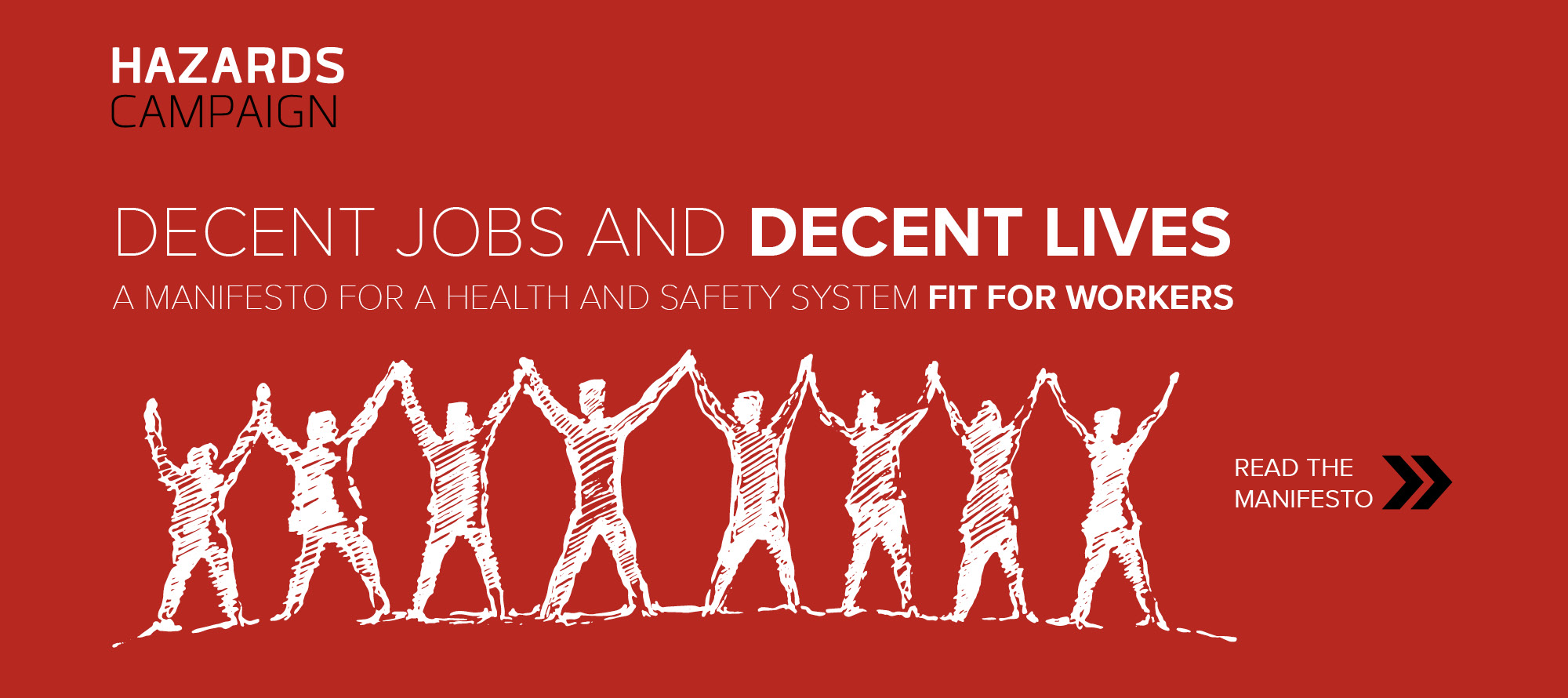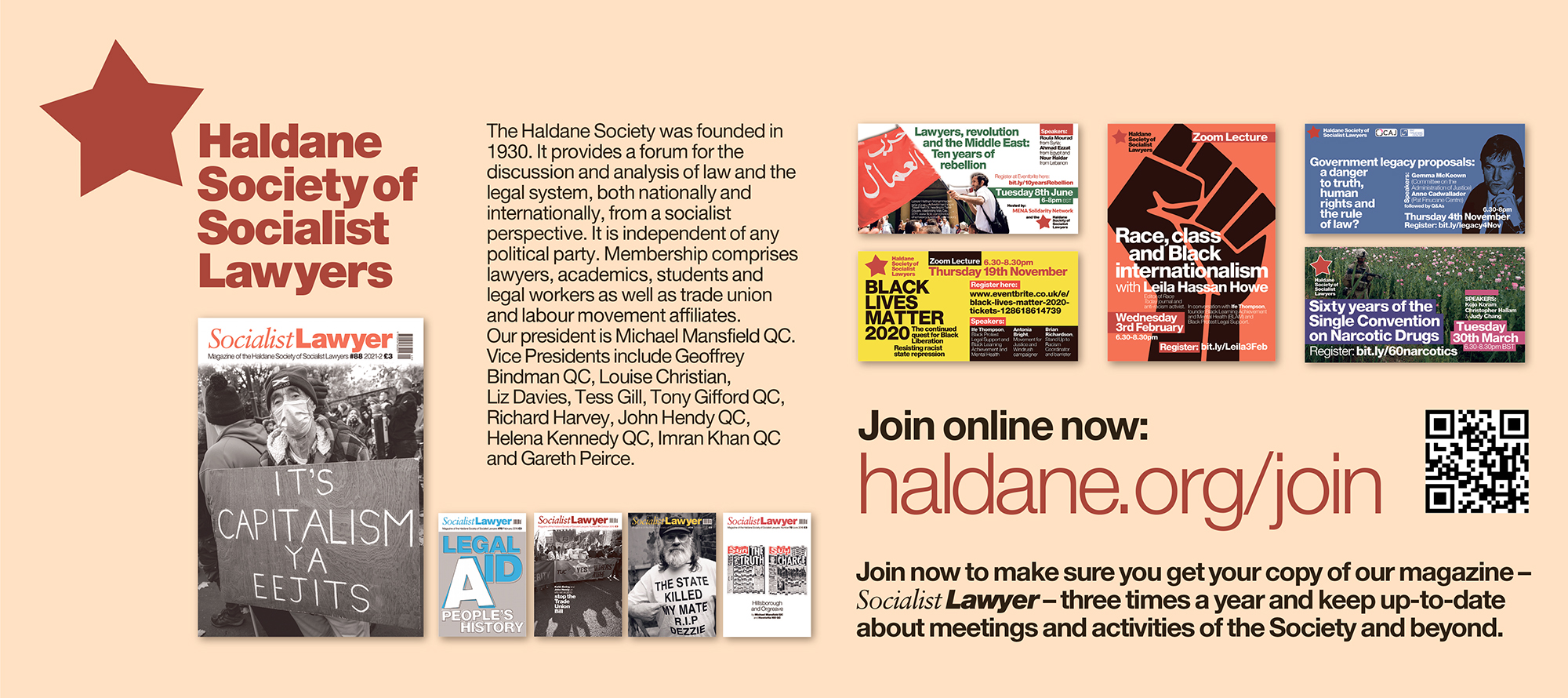IER Briefing: Equalities Update – Are we catching up?
27 September 2007 The last few years have seen major changes both in the framework of equality legislation and in the institutional structure of the enforcement agencies. New strands of discrimination have attracted legislative attention (age, religion, belief and sexual orientation) and new positive duties to promote equality have been placed on public bodies. To mark the launch of the Commission for Equality and Human Rights, the Institute of Employment Rights and the General Federation of Trade Unions] have brought together a timely collection of short but informed articles on the state of equalities in the UK.
27 September 2007
The last few years have seen major changes both in the framework of equality legislation and in the institutional structure of the enforcement agencies. New strands of discrimination have attracted legislative attention (age, religion, belief and sexual orientation) and new positive duties to promote equality have been placed on public bodies.
The Commission for Equalities and Human Rights will formally begin its work on 1st October 2007, replacing the existing sex, race and disability commissions. Soon, following the Discrimination Law Review (DLR) and numerous consultation documents, a Single Equality Bill will be introduced.
So has this activity generated more equality and less discrimination? Will the new Commission incorporate the best practices of the previous Commissions without losing their specific expertise? Has A Framework for Fairness (the recent report of the Discrimination Law Review) identified the current problems and proposed effective solutions?
To mark the launch of the Commission for Equality and Human Rights, the Institute of Employment Rights and the General Federation of Trade Unions] have brought together a timely collection of short but informed articles on the state of equalities in the UK. Written by a number of leading academic and legal experts together with trade union equality officers, the collection of articles provide a unique insight into equality at work today.
Professor Aileen McColgan2, Guest Editor for this edition of the Journal said:
“The publication of the Discrimination Law Review’s report has been long awaited and much anticipated but has come as a disappointment to most equality activists. A radical overhaul of UK anti-discrimination law is long overdue. The existing model is cumbersome, inconsistent and complex and, as the final report of the Equalities Review recently made clear, the legal framework has not delivered, and will not deliver, equality in terms of race, sex, disability or the other protected grounds.
A Framework for Fairness has favoured tinkering over radical change, and proposes little more than the gathering together of the many unsatisfactory statutes into a single piece of legislation. It is particularly unsatisfactory in relation to the scandal of women’s persistent underpayment. Further, there are some alarming suggestions for reduction of current standards, especially those imposing positive duties on public authorities. A Framework for Fairness is not only a wasted opportunity but in some ways is a real threat.”
Caroline Gooding3 first focuses on issues relating to disability. She considers A Framework for Fairness. Her first regret is that the Green Paper rules out extending the reasonable adjustment duties (introduced through the disability discrimination legislation) to other strands of discrimination. She also believes an opportunity has been lost to simplify and extend the definition of disability – one of the most troublesome aspects of the current legislation – and she makes a number of suggestions as to how this can be improved. More generally she believes the individualised approach to discrimination adopted by the Green Paper fails to put in place the necessary legal mechanisms needed to dismantle institutional discriminatory barriers and looks to the proposed Single Equality Act for more ambitious proposals.
Barry Smith4 then provides an excellent example of the gap between well intended legislation and the reality of life facing disabled workers. Writing from the GMB, the main union representing workers at Remploy, he provides an intriguing background to the current dispute over plant closures and an insight into the GMBs response to the government’s failure to protect
Lucy Vickers5 turns her attention to the Employment Equality (Religion and Belief) Regulations 2003. She looks at examples of indirect and direct discrimination, the protection of pure belief (religious or not) and manifestations of belief (eg dress code) and the use of the genuine occupational requirement clause. Despite the small number of cases brought under the Regulations, she concludes that religious discrimination is a common occurrence and that vigilance is needed to turn a commitment to diversity into a reality for workers.
Lorna Campbell6 then takes up the issue of religious discrimination and combines it with issues arising from the Employment Equality (Sexual Orientation) Regulations 2003. She highlights some of the problems facing workers in the Civil Service including homophobic attitudes in the name of religion, harassment due to perceived unfairness around time-off for religious observance and bullying following terrorist attacks.
Mark Bell7 looks in depth at the Sexual Orientation Regulations. According to Mark, bullying and harassment are the main themes dominating sexual orientation cases. Mark also considers other developments in law including the Civil Partnership Act, the Equality Act (Sexual Orientation) Regulations 2007 and the Discrimination Law Review. He concludes by saying that, while the legal landscape for LGBT persons has been transformed in recent years, there is still an ongoing need to transform legal standards into everyday reality.
In her article on the same theme, Maria Exall8 looks at what more trade unionists can do in the workplace to ensure that LGBT workers are protected against discrimination. Vigilance is needed, she says, to ensure that employers don’t adopt a “tick box” approach to the legislation. For Maria, education has a large role to play not only within the labour movement but, more importantly, within the education sector itself.
Karon Monaghan’s9 article considers the important issue of race. She starts by reminding us that 2006 was the 30th anniversary of the introduction of the Race Relations Act. While attitudes have changed and open hostility has reduced, prejudice associated with ethnicity remains and problems still exist for minority groups, most notably in access to employment. According to Karon, if things are to change, the imposition of positive duties on employers and service providers to address discriminatory practices is vital. Unfortunately, as she goes on to note, the current Green Paper proposes weakening existing duties and contains no great vision for equality law.
Sally Brett10, considers the question of age – one of the newer strands of discrimination legislation and likely to become one of the most common grounds of complaint in employment-related discrimination cases. Yet despite a third of the population experiencing ageism, Sally believes that confusion and uncertainty will surround the Regulations due mainly to the numerous exemptions, including the default retirement age, the National Minimum Wage youth rate and the age–based bands in the statutory redundancy scheme.
The next two articles cover the issue of equal pay. First Victoria Philips11 highlights the House of Lords’ decision in the St Helens catering staff case. In that case a clear message was sent to employers that bullying and victimising the victims of discrimination following an equal pay claim will not be tolerated. In the following article, Mark Berry12 provides a timely historical review of the role unions have played in first winning equal pay legislation and then in representing their members in equal pay cases.
A Framework for Fairness is the subject of the next article by Carolyn Jones13. In a critical examination of the proposals Carolyn concludes that, as feared, the focus has been on tidying up rather than reshaping discrimination/equality law, with few radical proposals for change. Although there are positive suggestions contained within the Green Paper, many are voluntary rather than required, existing duties are watered down and the scope for equality-furthering mechanisms in public procurement remains vague. The article concludes with a hope that responses to the consultation paper will result in a strengthened set of proposals in a more far reaching Single Equality Bill.
In recognition of past achievements, Diana Holland14 argues that persistent inequality must be a call to action rather than a course of despair. She reviews the growth in women trade unionists and lists some priorities for delivering A Fair Deal and a Charter for Women
Colm O’Cinneide15 then takes a more in-depth look at the structure and remit of the Commission for Equality and Human Rights. His overall conclusion is that the new Commission has some reasonably effective tools with which to push and cajole public authorities into giving enhanced attention to equality concerns but that, due to a “credibility gap”, the Commission will have to be flexible, creative, strategic and tough-minded to win credibility and make a difference.
Taking up the themes of the Commission and the proposed Single Equalities Act, Lena Calvert16 sees the process as an unfortunate case of the cart before the horse, preferring instead to have seen a Single Equality Act, which would inform the shape of a single Commission. Lena goes on to describe how the NUJ are using education as a tool to train equality reps and inform the development of model equal opportunity agreements.
In her article on the Commission, Pat Campbell17 highlights some of the fears of the union-representing members in the existing Commissions – not only in terms of protecting members being transferred, relocated and potentially made redundant – but also in relation to the need to hold the government to account for creating a robust and effective single equality body.
In the final article Barbara Limon18 turns her attention to what she refers to as “the implementation of the most significant piece of gender equality legislation for the past 30 years – the Gender Equality Duty”. She outlines how the EOC are using their powers to focus on outcomes rather than processes in an effort to produce real and visible gains for men and women.
ENDS
Notes to Editors
- Copies of Federation News can be purchased from IER at £8.00 for trade unions £30 others. Contact office@ier.org.uk or order at http://www.ier.org.uk/node/211
- For further information contact Carolyn Jones, Director of IER on 07941 076245 or 0151 702 6925
Biographical Notes of authors
1 The Institute of Employment Rights is an independent Charity specialising in employment rights and trade union freedoms. It is supported by trade unions representing over 6 million workers. See www.ier.org.uk. Contact office@ier.org.uk. The General Federation of Trade Unions was founded in 1899. It provides services and benefits including education and research to small unions. See www.gftu.org.uk Contact gftuhq@gftu.org.uk
2 Aileen McColgan is Professor of Human Rights Law King’s College London and a Barrister at Matrix Chambers. She specialises in human rights, labour and discrimination law, and is author of a number of textbooks and articles. She is Vice-President of the Institute of Employment Rights, an Advisory Board member of the British Institute of Human Rights, is on the Executive Committee of the Human Rights Lawyers Association and is on the Editorial Committees of the International Journal of Discrimination and the Law and the European Human Rights Law Review
3 Caroline Gooding is Director, Legislative Change at the Disability Rights Commission sheis a former member of the Disability Rights Taskforce and a former Director of the Disability Law Service. Outside of her full-time responsibilities, Caroline is Chair of the Trade Union Disability Alliance.
4 Barry Smith is GMB Legal Officer and an Executive Committee member of the Institute
5 Lucy Vickers is a Reader in Law, and Director of the Centre for Legal Research and Policy Studies at Oxford Brookes University.
6 Lorna Campbell is one of three full time national equality officers employed by the Public & Commercial Services Union (PCS) She is a member of the TUC Race Committee and secretary/coordinator of the PCS’s National Black Members Forum.
7 Mark Bell is a Professor of Law at the Centre for European Law and Integration, University of Leicester a member of the European Commission’s Network of Legal Experts in the Non-Discrimination Field; a member of the Editorial Board of the European Anti-Discrimination Law Review; a founding member of the Academic Network on the European Social Charter; co-convenor of the Labour Law section of the Society of Legal Scholars and a member of the Equality Advisory Group of Justice.
8 Maria Exall is a National Executive Council member of the Communication Workers Union and the LGBT representative on the TUC General Council
9 Karon Monaghan is a barrister at Matrix Chambers. She is a Member of The Bar Equality and Diversity Committee, the Equal Treatment Advisory Committee of JSB (2003 – 2011) and the Fawcett Commission on Women in the Criminal Justice System. She is a founder member and ex Chair of the Discrimination Law Association.
10 Sally Brett is Equality Policy Officer at the TUC with responsibility for cross-strand equality issues and with particular responsibility for age, religion or belief and equality legislation. Prior to joining the TUC earlier this year she was Deputy Editor of the workplace diversity and discrimination law journal, IDS Diversity at Work.
11 Victoria Phillips is Head of Employment Rights for Thompsons Solicitors, the UK’s largest firm of solicitors working with the trade union movement.
12 Mark Berry has worked for Thompsons Solicitors as a trade union lawyer for 30 years. He is responsible for local government equal pay work on behalf of the firm and is heavily involved in employment law matters.
13 Carolyn Jones is the Director of the Institute of Employment Rights
14 Diana Holland is National Organiser for Women, Race & Equalities, UNITE – the Union, T&G Section A long-standing member of the TUC Women’s Committee, founding Chair of the International TUC Women’s Committee and ITF Women Transport Workers and a member of the minister’s advisory committee on disabled people in employment.
15 Colm O’Cinneide joined the Faculty of Laws at University College London in 2001. He previously worked as Legal Officer to Lord Lester QC, He is a member of the Irish Bar; of the European Committee of Social Experts, Council of Europe; Age Equality Co-ordinator, EU Expert Group on Mapping Anti-Discrimination Law in Areas Outside of Employment and Occupation; UK rapporteur, EU Network of Anti-Discrimination Experts; and a member of the UK Task Force on the Establishment of a Commission for Equality and Human Rights.
16 Lena Calvert is the NUJ’s Equality Officer. Lena has worked on equality issues for the NUJ since 1992.
17 Pat Campbell is Head of the Equality, Health and Safety Department at (PCS) and a member of the TUC and ETUC Women’s Committees
18 Barbara Limon is Gender Equality Duty Manager at the Equal Opportunities Commission. In October 2007 the EOC, it will be dissolved and its role taken over by the Commission for Equality and Human Rights. Barbara joined the EOC in 2003, and for the past two years has worked on the development and promotion of the duty, focusing in particular on the health sector and employment and procurement practice.




